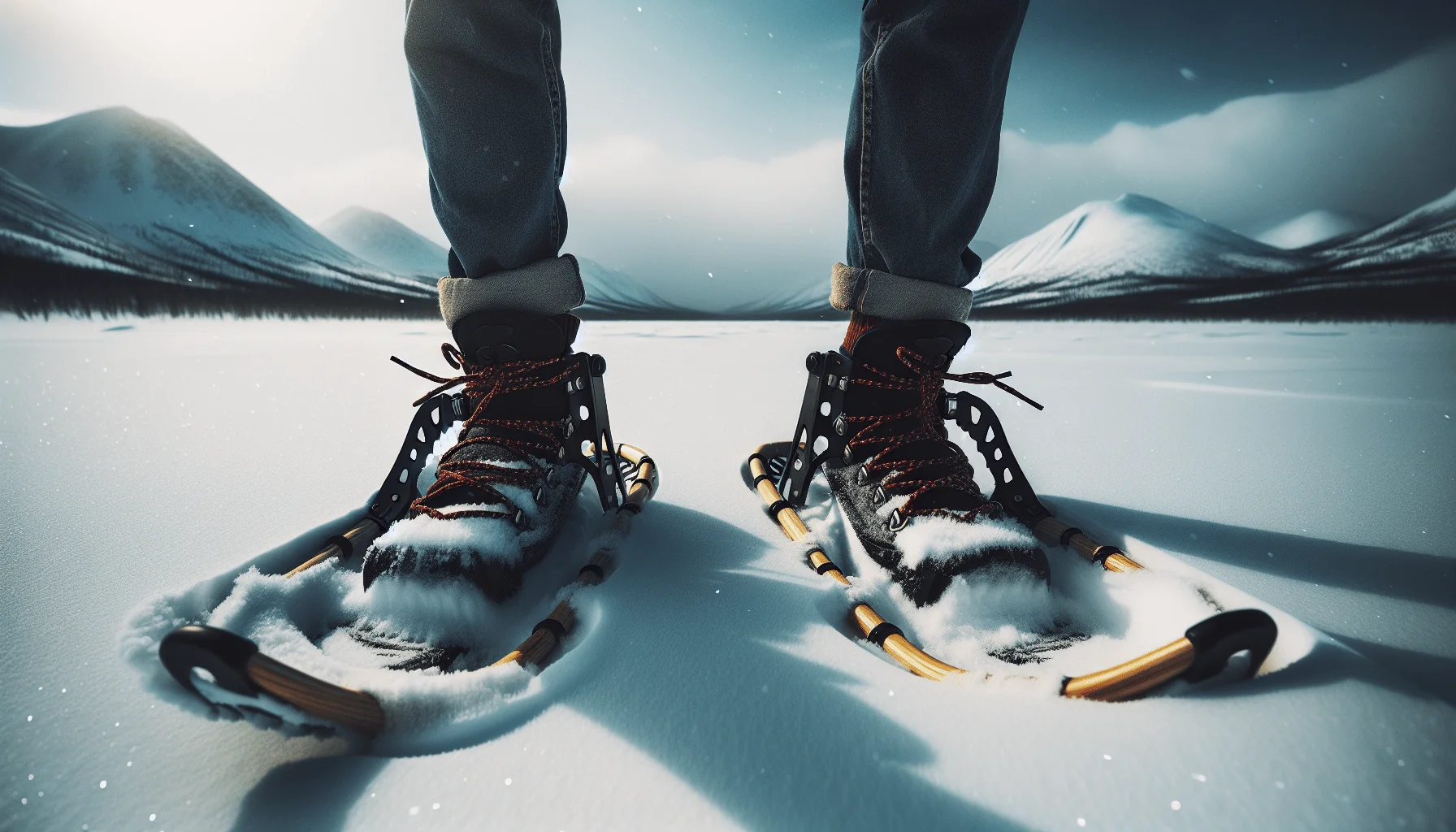Surviving the Adirondack Winter at the Loj
Imagine braving the blistering winds and frosty temperatures of the Adirondack winter, surrounded by snow-covered peaks and an icy wilderness. If you’re up for the challenge, the Adirondack Loj is the ultimate destination for winter adventurers seeking an unforgettable experience. In this article, we’ll explore the essential tips and tricks to not just survive, but thrive in the Adirondack winter at the Loj. From mastering the art of layering to conquering the frozen trails, get ready to immerse yourself in a winter wonderland like no other.
Preparing for the Adirondack Winter
Understanding the Adirondack climate
When preparing for a winter trip to the Adirondacks, it’s important to understand the unique climate of the region. Located in northeastern New York, the Adirondack Mountains experience long, cold winters with heavy snowfall. The average temperature during this time ranges from -13°F (-25°C) to 14°F (-10°C), making it important to pack appropriate clothing and gear to stay warm and safe.
Winter weather variations
The Adirondack winter weather can vary greatly, with conditions changing rapidly. Snowstorms are common, bringing heavy snowfall that can contribute to hazardous road conditions and make outdoor activities more challenging. It’s essential to stay updated on weather forecasts and be prepared for sudden changes in conditions during your stay.
Timeline of winter months
The Adirondack winter season typically lasts from December to March, with January and February being the coldest months. It’s important to plan your trip accordingly and take into account the amount of daylight available, as days are shorter during the winter months. Additionally, certain activities and facilities may have specific operating seasons, so it’s crucial to check for any restrictions or closures during your chosen dates of travel.
Traveling to the Loj
Planning your route
Before embarking on your journey to the Adirondacks, it’s essential to plan your route carefully. Consider road conditions, traffic, and potential alternative routes in case of any unexpected closures or delays. Additionally, research the most convenient and efficient way to reach the Adirondack Loj, taking into account distance, travel time, and any necessary permits or passes required for access.
Vehicle requirements for winter travel
When traveling to the Adirondacks during winter, it’s crucial to have a vehicle that is suitable for winter conditions. Ensure your vehicle is equipped with good winter tires, as they provide better traction on icy and snowy roads. It’s also advisable to have an emergency kit in your vehicle, including items such as a shovel, ice scraper, jumper cables, and a blanket.
Breaking down on the journey
In the unfortunate event of a breakdown during your journey to the Adirondacks, it’s important to know how to handle the situation. If possible, move your vehicle to the side of the road and turn on your hazard lights. If you have a cellphone, call for assistance. Additionally, keep emergency supplies in your vehicle, such as extra warm clothing, food, water, and a flashlight, in case you have to wait for help in cold conditions.
Arrival procedures during winter
When you arrive at the Adirondack Loj, it’s important to follow proper arrival procedures, especially during the winter season. Check-in at the front desk and familiarize yourself with the rules and guidelines for winter guests. The staff will provide you with important information regarding safety measures, facilities, and any specific instructions for your stay. It’s essential to adhere to these procedures to ensure a smooth and enjoyable experience during your time at the Loj.
Accommodation at the Loj
Describing the Loj layout
The Adirondack Loj is a cozy and welcoming lodging facility nestled in the heart of the Adirondack Mountains. The main building of the Loj features a communal dining area, a comfortable lounge with a fireplace, and various amenities for guests to enjoy. Additional accommodations are available in the form of rustic cabins and lean-tos scattered throughout the surrounding area.
Winter accommodations
During the winter season, the Adirondack Loj offers a range of accommodations to suit different preferences and group sizes. Cozy private rooms are available in the main building, providing comfort and convenience. For those seeking a more rustic experience, the Loj also offers winterized cabins and lean-tos, which can be a great option for those looking to immerse themselves in nature while still having access to essential amenities.
Facilities at the Loj
The Adirondack Loj provides essential facilities to ensure a comfortable and enjoyable stay. The communal dining area serves delicious meals, offering a chance to meet and socialize with other guests. The lounge provides a cozy space for relaxation, with comfortable seating and a crackling fireplace to warm up by after a day spent in the winter wilderness. Additionally, the Loj offers modern restroom facilities and hot showers to refresh and rejuvenate.
Booking a stay at the Loj
To secure your accommodation at the Adirondack Loj during the winter season, it’s advisable to make a reservation in advance. The Loj can be quite popular, especially during peak winter months, and booking early ensures availability. Reservations can be made online or by contacting the Loj directly. Be sure to provide the necessary information, such as the number of guests, preferred dates, and any specific requests or requirements you may have.
Packing Essentials for the Adirondack Winter
Clothing requirements for extreme cold
In preparation for the Adirondack winter, it’s crucial to pack appropriate clothing to keep warm in extreme cold conditions. Layering is key to maintaining warmth, so pack thermal base layers, insulating mid-layers, and a waterproof and windproof outer shell. Don’t forget to include warm socks, waterproof boots, gloves or mittens, a hat, and a scarf or neck gaiter to protect exposed skin from the cold.
Equipment for winter survival
When venturing into the Adirondack wilderness during winter, it’s important to have the necessary equipment for winter survival. This includes a sturdy backpack, a map and compass, a headlamp or flashlight, a multi-tool or knife, extra batteries, and a first aid kit. Additionally, pack items such as hand warmers, a portable stove, waterproof matches or a lighter, and a thermos for hot drinks to help keep you warm and nourished during your outdoor adventures.
Food and water considerations
When packing for your Adirondack winter trip, take into account the need for sufficient food and water. Carry high-energy and non-perishable snacks, such as granola bars and trail mix, to keep you fueled during your activities. It’s also important to stay hydrated, so pack a water bottle and consider a thermos for hot drinks, as drinking warm liquids can help maintain body temperature in cold weather. Be mindful of packing enough food and water for the duration of your trip, as well as any additional emergency rations.
Survival skills
Building a fire in snow
Knowing how to build a fire in the snow is a valuable survival skill in the Adirondack winter. Start by clearing a space down to solid ground, ensuring there are no flammable materials nearby. Gather dry tinder, such as small twigs or pine needles, and use them to ignite larger pieces of dry wood or a firestarter. Shield the fire from wind and snow with a makeshift windbreak, and carefully add more wood to maintain the fire.
Snow shelters
In case of an emergency or prolonged exposure to harsh winter conditions, being able to build a snow shelter can be a lifesaver. One common snow shelter is the snow cave. Start by digging a trench in the snow, then hollow out a space large enough for you to sit, lie down, and sleep in. Be sure to create ventilation holes for fresh air. Another option is a snow trench shelter, which involves digging a trench and covering it with a layer of snow to create a protective shelter.
Emergency signaling
When venturing into the wilderness, it’s crucial to know how to signal for help in case of an emergency. Three universal signals are commonly used: three whistle blasts, three gunshots, or three bonfires. These signals indicate that you are in need of assistance and can attract the attention of other outdoor enthusiasts or rescue teams. Additionally, carrying a whistle, signal mirror, or personal locator beacon can be valuable tools for signaling for help.
Winter Activities at the Loj
Winter hiking
Winter hiking in the Adirondacks offers a unique and breathtaking experience. The Loj serves as an excellent starting point for various winter hiking trails, ranging from beginner-friendly routes to more challenging adventures. Before setting out, check trail conditions, dress appropriately, and be prepared for potentially icy and snowy terrain. It’s also advisable to carry the necessary gear, such as microspikes or crampons, to ensure stability on slippery surfaces.
Snowshoeing
Snowshoeing is an ideal way to explore the winter landscape of the Adirondacks. The Loj provides access to a network of snowshoeing trails, allowing you to experience the beauty of the snow-covered forests and mountains. Renting snowshoes from the Loj is a convenient option if you don’t have your own equipment. Remember to dress in layers, bring extra warm clothing, and carry essentials such as water, snacks, and a map.
Ice fishing
Ice fishing is a popular winter activity in the Adirondacks, and the Loj is located near several lakes renowned for their abundance of fish. Before heading out, familiarize yourself with ice fishing regulations, obtain the necessary permits, and gather the proper equipment. Set up your fishing spot on a frozen lake, drill a hole through the ice, and patiently wait for a nibble. Ice fishing can be a relaxing and rewarding experience, providing an opportunity to connect with nature and enjoy the tranquility of the winter wilderness.
Cross country skiing
Cross country skiing is a fantastic way to experience the Adirondack winter landscape while getting some exercise. The Loj offers access to groomed trails suitable for all skill levels, from beginners to experienced skiers. Whether you prefer a leisurely glide through the snow-covered forests or a more challenging workout, cross country skiing provides an enjoyable and immersive winter activity. Renting cross country skis and poles from the Loj is an excellent option for those without their own equipment.
Adirondack Winter Wildlife
Common species during winter
The Adirondack region is home to a variety of wildlife that adapt to the harsh winter conditions. Species commonly spotted during winter include white-tailed deer, snowshoe hares, red squirrels, and a variety of bird species, including owls and woodpeckers. The snow-covered landscape offers a unique opportunity to observe these animals in their natural habitat, so be sure to keep your eyes peeled during your winter adventures.
Interactions with wildlife
While encountering wildlife can be exciting, it’s important to remember that these animals are wild and should be observed from a safe distance. Avoid approaching or feeding wildlife, as this can disrupt their natural behavior and potentially pose a risk to both you and the animals. Carry binoculars or a camera with a telephoto lens to capture stunning close-up shots while maintaining a respectful distance.
Safety around wildlife
When exploring the Adirondacks during winter, it’s crucial to prioritize your safety and the well-being of the wildlife. If you come across larger animals such as black bears or moose, give them plenty of space and do not attempt to approach or interact with them. Familiarize yourself with proper wildlife safety protocols before your trip and always be aware of your surroundings. By respecting the wildlife and their habitats, you can ensure a safe and enjoyable experience in the Adirondack winter.
Health and Safety in Adirondack Winter
Dealing with frostbite and hypothermia
In the extreme cold of the Adirondack winter, it’s important to be aware of the signs and symptoms of frostbite and hypothermia. Frostbite occurs when skin and underlying tissues freeze, and symptoms include numbness, tingling, pale or waxy skin, and pain. Hypothermia, on the other hand, is a dangerous condition where body temperature drops too low, leading to confusion, shivering, fatigue, and loss of coordination. To prevent these conditions, dress appropriately, stay hydrated, and seek warm shelter if you notice any concerning symptoms.
Staying healthy during your stay
Maintaining good health during your stay at the Adirondack Loj is essential for a successful winter trip. Be sure to get plenty of rest, eat nutritious meals, and stay hydrated. Wash your hands frequently, especially before meals, to minimize the risk of illness. It’s also wise to carry a basic first aid kit with supplies such as bandages, pain relievers, and any necessary personal medications. By taking care of your health, you can fully enjoy all the winter activities the Adirondacks have to offer.
Emergency services in the region
While the Adirondack Loj strives to provide a safe and welcoming environment, it’s important to be aware of the available emergency services in the region. Familiarize yourself with the nearest hospitals and medical facilities, as well as the contact information for emergency services. Make sure to have a cellphone or other means of communication that works in the area, and inform the front desk or staff at the Loj if you have any known medical conditions or concerns.
Leaving the Loj
Check-out procedures during winter
When it’s time to leave the Adirondack Loj, be sure to follow proper check-out procedures to ensure a smooth departure. Return any borrowed equipment or keys to the front desk and settle any outstanding charges. Check your accommodations to ensure you haven’t left anything behind, and remember to verify your departure time to allow for any necessary travel adjustments due to weather conditions or traffic.
Traveling back safely
As you travel back from the Adirondacks, prioritize your safety and well-being. Be aware of any potential changes in weather or road conditions and adjust your travel plans accordingly. Take breaks as needed to rest, stretch your legs, and stay alert during your journey. Remember to always follow traffic laws and take extra caution when driving in winter weather. Take the wonderful memories of your Adirondack winter experience with you as you head back home.
Coping with Post-adirondack blues
Leaving the Adirondacks after a memorable winter trip can trigger feelings of longing and nostalgia, often referred to as post-Adirondack blues. To cope with these emotions, reminisce about your favorite moments from the trip, share stories and photos with friends and loved ones, and consider planning your next visit to the Adirondacks. Reflecting on the beauty and serenity of the winter wilderness can help ease the transition back to everyday life.
Come Back during the Summer
Summer activities at the Loj
While the Adirondacks offer incredible winter experiences, there is also much to enjoy during the summer months. The Adirondack Loj provides a base for various summer activities, including hiking, canoeing, fishing, and swimming. Explore the extensive trail network, paddle along peaceful lakes, cast a line in search of trout, or cool off in the refreshing waters. The Adirondack summer is a perfect time to immerse yourself in nature and enjoy the abundance of outdoor adventures.
Climate difference in Summer
The Adirondack summer brings warmer temperatures and longer daylight hours, offering a stark contrast to the winter season. Average temperatures range from 50°F (10°C) to 80°F (27°C), providing pleasant conditions for outdoor activities. The lush green landscapes, blooming wildflowers, and bustling wildlife create a vibrant and picturesque backdrop to your summer adventures. Pack accordingly with lightweight clothing, sunscreen, and insect repellent to fully enjoy the Adirondack summer.
Booking for your next visit
As you depart the Adirondack Loj after a memorable winter trip, consider booking your next visit during the summer season. The Adirondacks offer a completely different experience in summer, with a whole new range of activities to enjoy. Whether it’s hiking to breathtaking summits, camping under the starry sky, or simply immersing yourself in the tranquility of nature, the Adirondack summer is not to be missed. Start planning your next visit to the Adirondack Loj and embrace all that the summer season has to offer.







